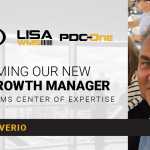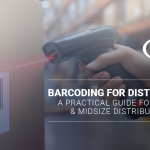What Is ERP? A Plain-English Guide for SMB Leaders
If you’re running a growing manufacturing or distribution business, you’ve probably heard “ERP” thrown around in conversations about solving operational headaches. But what exactly is ERP, and more importantly—do you actually need it?
This guide cuts through the vendor jargon to give you straight answers. We’ll help you understand what ERP really means for businesses like yours, when it makes sense to invest, and when simpler solutions might be the better choice.
What Does ERP Mean in Simple Terms?
ERP stands for Enterprise Resource Planning. Despite the intimidating name, the concept is straightforward: ERP is business software that connects your core operations—accounting, inventory, purchasing, sales, and manufacturing—into one integrated system.
Think of it this way: instead of managing your business through separate spreadsheets, standalone accounting software, and disconnected inventory systems, ERP gives you one central database where all your business information lives and flows together automatically.
When your sales team enters an order, your inventory automatically adjusts, accounting records the transaction, and purchasing knows to reorder stock—all without manual data entry or reconciliation between systems.
How ERP Works: The Data Flow That Changes Everything
The real power of ERP lies in how it handles data flow across your business. Here’s what happens when systems talk to each other properly:
Before ERP (Disconnected Systems)
- Sales enters orders in one system
- Warehouse checks inventory on spreadsheets
- Accounting manually enters transactions
- Purchasing relies on visual stock checks
- Everyone spends hours reconciling conflicting information
After ERP (Integrated Flow)
- Order entry automatically reserves inventory
- Warehouse receives pick lists with real-time stock levels
- Financial transactions post automatically with proper cost accounting
- Purchase suggestions generate based on actual demand and lead times
- Managers access real-time dashboards instead of waiting for month-end reports
This isn’t theoretical—we’ve seen manufacturers go from 85% inventory accuracy (typical with spreadsheets and manual processes) to 99.9% accuracy within a year of implementing proper barcoding and ERP integration.
What Is ERP Used For? Core Business Functions
ERP systems typically manage these interconnected business processes:
Financial Management
General ledger, accounts payable/receivable, budgeting, and financial reporting with real-time visibility into costs and profitability.
Inventory and Warehouse Management
Stock tracking, receiving, putaway, picking, shipping, and cycle counting with barcode or RFID scanning for accuracy.
Sales and Customer Management
Order processing, pricing, customer history, and integration with your CRM system for complete customer visibility.
Purchasing and Vendor Management
Purchase order creation, receipt matching, vendor performance tracking, and automated reordering based on demand forecasts.
Manufacturing and Production
Work order management, bill of materials (BOM), routing, capacity planning, and shop floor data collection for real-time production visibility.
Quality and Compliance
Lot tracking, recall management, quality control checkpoints, and regulatory reporting—critical for industries like food, pharmaceuticals, and medical devices.
ERP vs CRM vs WMS vs MRP: Understanding the Differences
Many business leaders get confused about which system solves which problems. Here’s a practical breakdown:
ERP (Enterprise Resource Planning) manages your entire business operation—think of it as the central nervous system connecting finance, inventory, sales, and operations.
CRM (Customer Relationship Management) focuses specifically on sales, marketing, and customer service interactions. CRM tracks leads, manages opportunities, and stores customer communication history.
WMS (Warehouse Management System) optimizes how you physically handle inventory—directing putaway locations, pick paths, and packing processes for maximum efficiency.
MRP (Material Requirements Planning) calculates what materials you need to buy or make based on your sales forecasts and production schedules.
The Integration Reality: Most growing businesses need ERP as the foundation, then decide whether to use ERP’s built-in CRM and warehouse functions or integrate specialized best-of-breed systems. For example, you might run SAP Business One as your ERP core, integrate with Salesforce for CRM, and add a dedicated WMS like LISA for complex warehouse operations.
Do Small Businesses Need ERP?
Not every business needs ERP right away. Here’s how to know if you’re ready:
Signs You’re Ready for ERP
- Data Reconciliation Pain: You spend more than 4 hours per week reconciling information between systems or finding discrepancies in reports.
- Multi-Location Operations: You have multiple warehouses, retail locations, or manufacturing facilities that need shared inventory visibility.
- Complex Product Structures: You manufacture products with bills of materials, configure products to order, or track lot numbers and serial numbers for compliance.
- Growth Strain on Current Systems: Your existing software crashes, runs slowly, or can’t handle your transaction volume during busy periods.
- Regulatory Requirements: You need lot traceability, quality control documentation, or detailed financial reporting for audits or compliance.
Signs You’re Not Ready Yet
- Single Location with Simple Products: If you operate from one location with straightforward inventory, a good accounting system plus basic inventory software might suffice.
- Under 50 SKUs: Very simple product lines often don’t justify ERP complexity and cost.
- Less than $2 Million Annual Revenue: The cost of ERP implementation and change management typically doesn’t pay off until you reach sufficient scale.
- No Dedicated IT Support: ERP systems require ongoing maintenance, user training, and troubleshooting—you need someone on your team who can handle basic system administration.
Sometimes the answer isn’t choosing ERP or not choosing ERP—it’s connecting your existing systems better. Modern integration platforms can link your accounting software, inventory system, and e-commerce platform to eliminate much of the manual data entry without a full ERP implementation.
Types of ERP: Cloud vs On-Premises vs Hybrid
Understanding deployment options helps you choose the right fit for your business:

Cloud ERP (Software as a Service) runs on the vendor’s servers, accessible through web browsers. You pay monthly subscription fees and the vendor handles updates, backups, and security. This works well for smaller businesses without dedicated IT staff.

On-Premises ERP runs on your own servers and network. You purchase licenses upfront and control the entire environment. This appeals to larger manufacturers with sensitive data or specific customization needs.

Hybrid ERP combines both approaches—perhaps running core ERP on-premises while using cloud-based modules for e-commerce integration or mobile access.
For most SMB manufacturers and distributors, cloud ERP offers the best balance of functionality, cost control, and reduced IT burden. However, companies with high-security requirements or extensive customizations often prefer on-premises deployments.
What Are Examples of ERP Systems?
Here are the most common ERP options for small and midsize manufacturers and distributors:

SAP Business One
Designed specifically for SMBs, with strong manufacturing and distribution functionality. Popular choice for companies needing robust financial reporting and industry-specific features.

NetSuite
Cloud-native ERP with good e-commerce integration and multi-location capabilities. Often chosen by rapidly growing companies that need scalability.

Microsoft Dynamics 365 Business Central
Strong integration with Microsoft Office and familiar user interface. Good choice for companies already using Microsoft tools.

Oracle Fusion ERP
Enterprise-grade, cloud-based platform with strong financials, procurement, and supply chain features. Favored by large organizations needing global compliance and scalability.

Sage 100 and Sage X3
Mature systems with strong accounting roots, popular in traditional manufacturing environments.
ERP Benefits: What Changes When You Get It Right
When properly implemented, ERP transforms how your business operates:
Informed Decision Making
Real-time dashboards replace guesswork—you can see which products generate the highest margins, which customers pay fastest, and where your operations have bottlenecks.
Reduced Labor Costs
Automated workflows eliminate duplicate data entry and reduce errors that require manual correction. The time savings often pay for the system within 18-24 months.
Regulatory Compliance
Built-in lot tracking, quality control checkpoints, and audit trails ensure you can respond quickly to recalls or regulatory inquiries.
Inventory Accuracy Improvements
Barcoding and WMS integrations commonly lift inventory record accuracy into the high-90s (+97%) in year one, with best-in-class operations can reach ~99.9%.
Faster Month-End Close
Financial closing cycles that used to take 10-15 days often shrink to 3-6 days with automation, such as when transactions post automatically and reconciliation is built into daily processes.
Better Customer Service
Your sales team can instantly see real inventory levels, shipment status, and customer history instead of promising delivery dates they can’t guarantee.
ERP Costs: Understanding Total Cost of Ownership
Be prepared for costs beyond the software license. Here’s what a realistic 3-year TCO looks like for a $5-50 million revenue company:
Implementation Services
$25,000-$100,000 for setup, configuration, data migration, and testing. Complex manufacturers can exceed this range, with implementation often equals 100–200% of software cost, and data migration can be 10–25% of the project.
Data Migration
$5,000-$25,000 to clean up and transfer historical data from existing systems—often more complex than anticipated.
Software Licenses
Common SMB cloud ERP seat pricing hovers around $70–$150/user/month. Total subscription depends on modules chosen.
Ongoing Support
$3,000-$15,000 annually for software updates, user support, and system maintenance.
ROI Timeline
Most SMB implementations achieve positive ROI within 16-24 months through labor savings, reduced errors, and better decision-making capabilities.
Training and Change Management
$10,000-$50,000 for comprehensive user training, process documentation, and ongoing education as your team adapts to new workflows.
Hidden Costs
Plan for additional hardware, network upgrades, and productivity losses during the transition period. Many implementations also require process improvements before the software can be effective.
Am I Ready for ERP? A Decision Framework
Use this practical checklist to assess your readiness:
Business Scale Indicators
- Annual revenue above $5 million
- More than 10 employees
- Over 100 active SKUs
- Multiple sales channels (wholesale, retail, e-commerce, market places)
- Multiple warehouse locations, production sites or planned expansion
Technical Readiness
- Have reliable internet connectivity and network infrastructure
- Someone on your team can learn basic system administration
- Commitment to formal user training and process documentation
- Budget for 6–18month implementation timeline
- Executive sponsorship for change management
Operational Pain Points
- Spend >4 hours/week reconciling data between systems
- Inventory discrepancies affect customer orders monthly
- Month-end close takes more than 7 business days
- Cannot quickly answer “what did it cost to make?” questions
- Lack real-time visibility into cash flow or inventory levels
Regulatory/Growth Drivers
- Need lot traceability for recalls or compliance
- Customers require EDI or advanced reporting
- Planning significant growth or acquisition
- Current systems limit business growth
- If you checked 12+ boxes, ERP likely makes sense.
- If you checked 8-11 boxes, we suggest exploring integration options first.
- If you checked under 8 boxes, it indicates you may not be ready yet.
ERP Implementation: What to Expect
Understanding the implementation process helps set realistic expectations.
Phase 1
Discovery and Planning (4-8 weeks) involves mapping your current processes, identifying requirements, and designing your future state workflows. This foundation work determines implementation success.
Phase 2
System Configuration (6-12 weeks) includes setting up the software, migrating data, and building integrations with existing systems like e-commerce platforms or specialized equipment.
Phase 3
Testing and Training (4-8 weeks) focuses on validating the system works correctly and ensuring your team understands the new processes before going live.
Phase 4
Go-Live and Support (2-4 weeks) involves the actual transition to the new system with intensive support to resolve issues quickly and maintain business continuity.
Total Timeline
Most SMB implementations take 4-9 months from contract signing to full deployment. Complex manufacturers or multi-location distributors often need 9-15 months.
ERP vs Integration: Finding the Right Solution
Not every business needs to replace all their systems with ERP. Modern integration platforms can connect your existing accounting, inventory, and e-commerce systems to eliminate manual data entry while preserving your investment in current software.
Consider Integration When
- Your current accounting system meets most needs
- You need better data flow between 2-3 systems
- Budget constraints limit full ERP implementation
- Your team is comfortable with existing software
Choose Full ERP When
- You’re using 4+ disconnected systems
- Current software lacks essential functionality
- Growth requires capabilities your existing systems can’t provide
- Integration costs approach full ERP implementation costs
Making the ERP Decision: Next Steps
If this guide suggests you’re ready for ERP, here’s how to move forward methodically.
Start with a Technology Assessment
Audit your current systems, document pain points, and quantify the cost of inefficiencies. This business case justifies the investment and guides vendor selection.
Define Requirements Clearly
Involve users from each department to identify must-have functionality, nice-to-have features, and deal-breaker limitations. Industry-specific requirements often drive vendor choice.
Research Vendors Carefully
Look beyond flashy demos to find vendors with deep experience in your industry and proven implementation track records with companies your size.
Plan for Change Management
ERP success depends more on user adoption than software functionality. Budget time and money for comprehensive training and process documentation.
Start Small If Possible
Some vendors offer phased implementations—begin with core financials and inventory, then add manufacturing or advanced warehouse management later.
The Reality About ERP
After three decades of implementing ERP systems for SMB manufacturers and distributors, we’ve learned that successful projects share common characteristics:
Executive Commitment
Leadership must actively support the project and communicate its importance throughout the organization.
Process Improvement Focus
ERP works best when you improve your processes first, then configure software to support better workflows rather than automating existing inefficiencies.
Realistic Timeline Expectations
Rushed implementations create problems that take years to fix. Plan for thorough testing and gradual rollout.
User Training Investment
Software training isn’t enough—people need to understand why new processes are better and how they contribute to business success.
Data Quality Foundation
ERP amplifies whatever data quality you have. Clean up your item masters, customer records, and vendor information before migration.
The companies that get ERP right see transformational results: inventory accuracy above 99%, faster decision-making with real-time data, and the operational foundation to support significant growth. The companies that rush the decision or skimp on implementation often struggle with adoption and fail to achieve expected benefits.
Conclusion: ERP is a Growth Enabler
Implementing an ERP isn’t just about replacing old software—it’s about building the operational foundation your growing business needs for the future. When you can trust your data, respond quickly to customer needs, and make informed decisions based on real-time information, you create competitive advantages that compound over time.
The key is approaching ERP as a business transformation project, not just a technology upgrade. Start with an honest assessment of your readiness, invest in proper implementation, and focus on user adoption to achieve the operational excellence that drives profitable growth.
Remember that you’re not alone in this process. Experienced implementation partners can help you avoid common pitfalls and accelerate time to value. The investment in getting ERP right pays dividends for years through improved efficiency, better decision-making, and the ability to scale operations without proportional increases in administrative overhead.
Ready to explore whether ERP makes sense for your business?
Our team has helped hundreds of manufacturers and distributors make this decision over the past 30 years. We offer complimentary technology assessments to help you understand your options and create a realistic roadmap for operational improvement.






